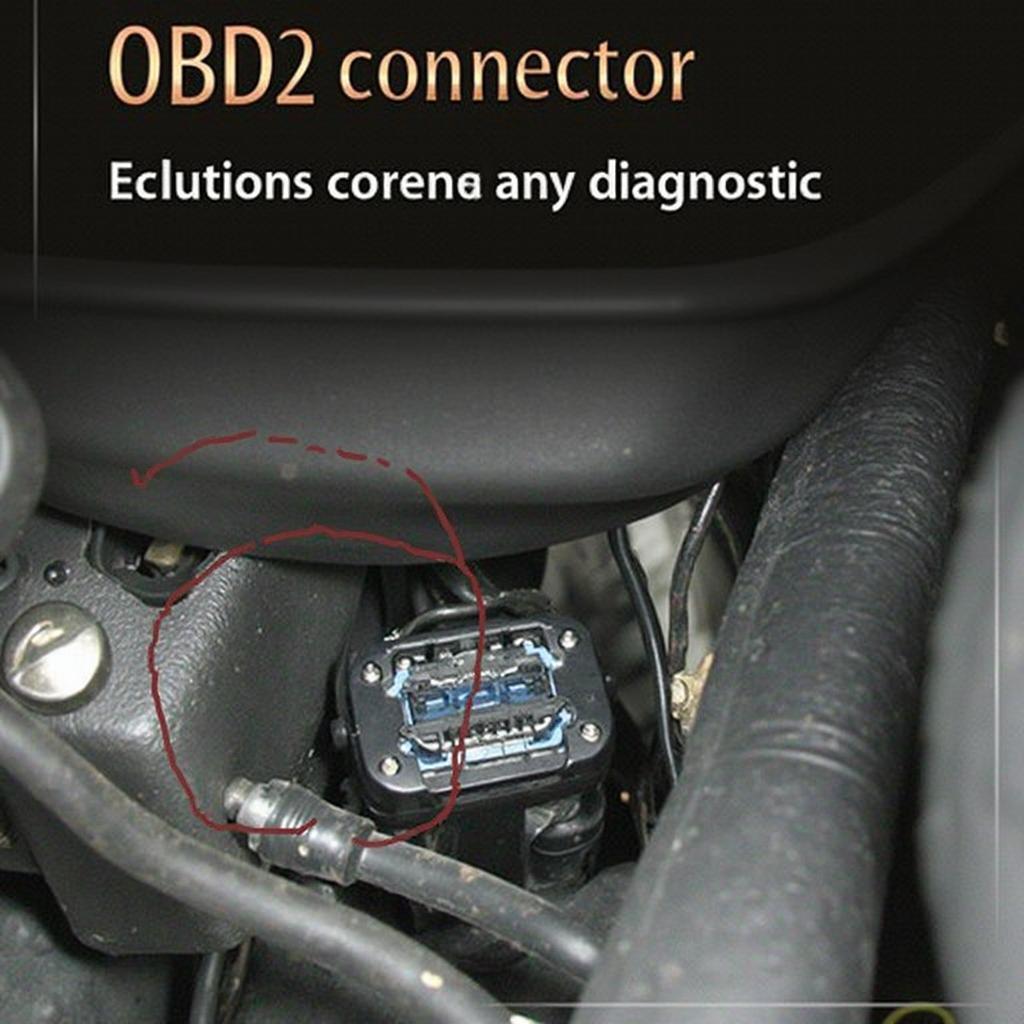OBD2 vs. OBD2b: Understanding the differences and similarities between these two on-board diagnostic standards is crucial for any car enthusiast or professional mechanic. This article will delve into the nuances of OBD2 and OBD2b, exploring their history, functionalities, and implications for vehicle diagnostics.
Unraveling the OBD2 Standard
OBD2, or On-Board Diagnostics II, revolutionized vehicle diagnostics. Implemented in 1996 in the United States, it provided a standardized system for accessing a vehicle’s emissions and diagnostic trouble codes (DTCs). This standardization made diagnostics easier for mechanics, regardless of the vehicle’s make or model. OBD2 utilizes a standardized 16-pin connector, located somewhere within the driver’s reach, usually under the dashboard. This connector serves as the gateway to the vehicle’s computer, allowing access to a wealth of information about its performance and health.
OBD2b: A Misnomer and Clarification
The term “OBD2b” is often a source of confusion. There is no official “OBD2b” standard. The term is sometimes used colloquially to refer to OBD2 systems implemented in vehicles manufactured after 1996, particularly those using specific communication protocols like Controller Area Network (CAN). However, these are still considered variations within the OBD2 standard, not a separate standard altogether. The confusion may stem from the fact that car manufacturers adopted different communication protocols within the broader OBD2 framework as technology evolved.
Key Differences Within OBD2 (Often Mislabeled as OBD2 vs. OBD2b)
While the term “OBD2b” is inaccurate, differences do exist within the OBD2 framework depending on the vehicle’s make, model, and year. These differences primarily relate to the communication protocols used:
- Communication Protocols: Earlier OBD2 systems used protocols like J1850 PWM/VPW, ISO 9141-2, and KWP2000. Later models predominantly adopted the CAN protocol, which allows for faster communication and more data transfer.
- Data Access: While all OBD2 systems provide access to DTCs and emissions data, the specific parameters accessible may vary depending on the vehicle and the scanner used.
- Connector Pinouts: While the 16-pin connector is standard, certain pins may be assigned different functions depending on the manufacturer and communication protocol.
Why the Confusion?
The persistent “OBD2b” myth likely arose from the evolving landscape of OBD2 protocols. As manufacturers transitioned to CAN and other advanced protocols, some mistakenly perceived this shift as a new standard altogether.
Choosing the Right OBD2 Scanner
Selecting the correct scanner requires understanding your vehicle’s specific OBD2 implementation. Many modern scanners support multiple protocols, ensuring compatibility across a wide range of vehicles.
- Expert Insight: “Choosing an OBD2 scanner that supports all five OBD2 protocols is essential for a professional mechanic,” says Michael Sanchez, Senior Automotive Diagnostics Engineer at AutoTech Solutions. “This ensures they can diagnose any OBD2 compliant vehicle, regardless of its make, model, or year.”
Conclusion
The distinction between “OBD2” and “OBD2b” is essentially a misunderstanding. Understanding the nuances within the OBD2 standard itself, including the different communication protocols, is key to effective vehicle diagnostics. Choosing the right OBD2 scanner and interpreting the data accurately will ensure you get the most out of this powerful diagnostic tool. Remember, investing in a high-quality, multi-protocol OBD2 scanner is crucial for anyone serious about vehicle diagnostics.
FAQ
- Is OBD2b a real standard? No, “OBD2b” is a colloquial term, not an official standard. It often refers to post-1996 OBD2 implementations, particularly those using CAN.
- What’s the difference between OBD2 and EOBD? EOBD (European On-Board Diagnostics) is essentially Europe’s version of OBD2, with some minor differences in implementation and regulations.
- Do all cars have the same OBD2 connector? Yes, all OBD2 compliant vehicles have the same 16-pin connector.
- What is a DTC? A DTC (Diagnostic Trouble Code) is a code stored in the vehicle’s computer that indicates a specific malfunction.
- How do I find my car’s OBD2 port? The OBD2 port is usually located under the dashboard on the driver’s side, within reach.
- Expert Insight: “Don’t underestimate the power of a good OBD2 scanner. It can save you time and money by allowing you to diagnose problems early on,” advises Maria Rodriguez, Certified Master Technician at Automotive Excellence Center.
Common OBD2 Diagnostic Scenarios
- Check Engine Light: The most common reason for using an OBD2 scanner is to diagnose the cause of a check engine light.
- Emissions Testing: OBD2 scanners are essential for verifying a vehicle’s emissions compliance.
- Performance Monitoring: Enthusiasts use OBD2 scanners to monitor various performance parameters, such as engine speed, coolant temperature, and fuel economy.
Further Reading
For more in-depth information, explore other articles on our website covering topics such as specific OBD2 protocols, advanced diagnostic techniques, and choosing the right scanner for your needs.
If you need further assistance, please contact us via WhatsApp: +1(641)206-8880, Email: [email protected] or visit our office at 789 Elm Street, San Francisco, CA 94102, USA. Our customer support team is available 24/7.


